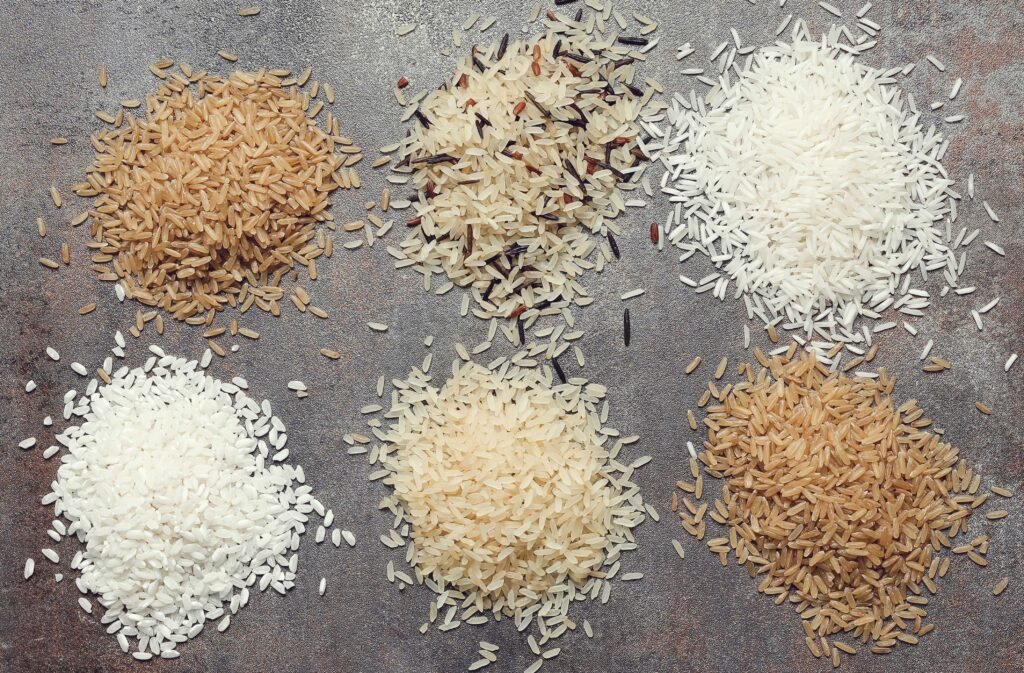India’s Non Basmati Rice Bounty: A Journey of Flavor and Versatility

India is one of the largest producers of rice in the world, and non-Basmati Varieties contributes significantly to this production. Non-Basmati rice is grown in various states across the country, The diverse agro-climatic conditions in India make it suitable for the cultivation of a wide variety of non-Basmati rice, each with its unique taste, texture, and culinary applications.
India cultivates a diverse range of non-Basmati rice varieties, including Sona Masoori, Ponni, IR 64, and many others. Each variety has its own distinct characteristics, making them suitable for different dishes and cooking preferences. Factors like soil quality, climate, and processing techniques impact the taste and texture of the rice.
Click here for List of Major Basmati Rice varieties exporting from India
Non-Basmati rice serves as a staple food for a significant portion of the Indian population. It forms the base of numerous regional dishes and is an essential component of everyday meals for millions of people.
Click here for India’s Non Basmati rice Export Data
Moreover, India is the biggest exporter of non-Basmati rice worldwide. Countries like Bangladesh, Nepal, and Sri Lanka, along with Middle Eastern nations such as Saudi Arabia, UAE, Qatar, and Kuwait, as well as countries in Africa, the USA, and Australia rely on Indian non-Basmati rice. It caters to a different segment of the global market, making it an important commodity for India’s agricultural exports.
Non-Basmati rice provides an affordable option for countries with diverse economic backgrounds. Its availability in different forms and price ranges makes it accessible to a wider consumer base, contributing to food security on a global scale.
Here is the list of major Non Basmati Rice Varieties Cultivated Across Different States in India
| Cultivating States | Rice Variety |
|---|---|
| Andhra Pradesh | BPT, HMT, NLR Masoori, IR 64 |
| Bihar | Sona, Samba Masuri / Samba Masoori, Parmal, Katarni, Mansoori |
| Chhattisgarh | Swarna, IR-64 |
| Karnataka | Sona Masuri / Sona Masoori, RNR |
| Kerala | Kaima Rice, Thanjavur Ponni, Palakkadan Matta Long / Short, Jeerakasala Rice, Kuruva Rice |
| Kolkata (West Bengal) | Gobind Bhog, Swarna, Ratna, IR-64, Miniket |
| North East | Chakao, Black Rice (Joha) |
| Maharashtra | Swarna, Kolam Rice, BPT, IR-64 |
| Odisha | Swarna, Kalabati Black Rice |
| Tamil Nadu | Idly Adt 37, Idly CR 1009, Tanjavur Ponni, Rajabhogam Ponni |
| Telangana | BPT, HMT, Kolam Rice, JSR |
| Uttar Pradesh | Samba Masoori, Rupali, Katarni Sona, Sharbati |
Non-Basmati rice varieties come in various grain sizes. The size of rice grains depends on the variety of seeds used for cultivation. Different rice varieties produce grains of varying sizes, typically ranging from 5.2mm to 6mm. This size variation is significant because it affects cooking characteristics and consumer preferences. Farmers select specific seed varieties based on the desired grain size to meet the culinary expectations and market demands effectively.
Did you know that different milling processes yield different rice qualities? Raw, steam, and boiled rice each offer distinct textures and cooking characteristics, providing consumers with a variety of options to suit their cooking preferences.


